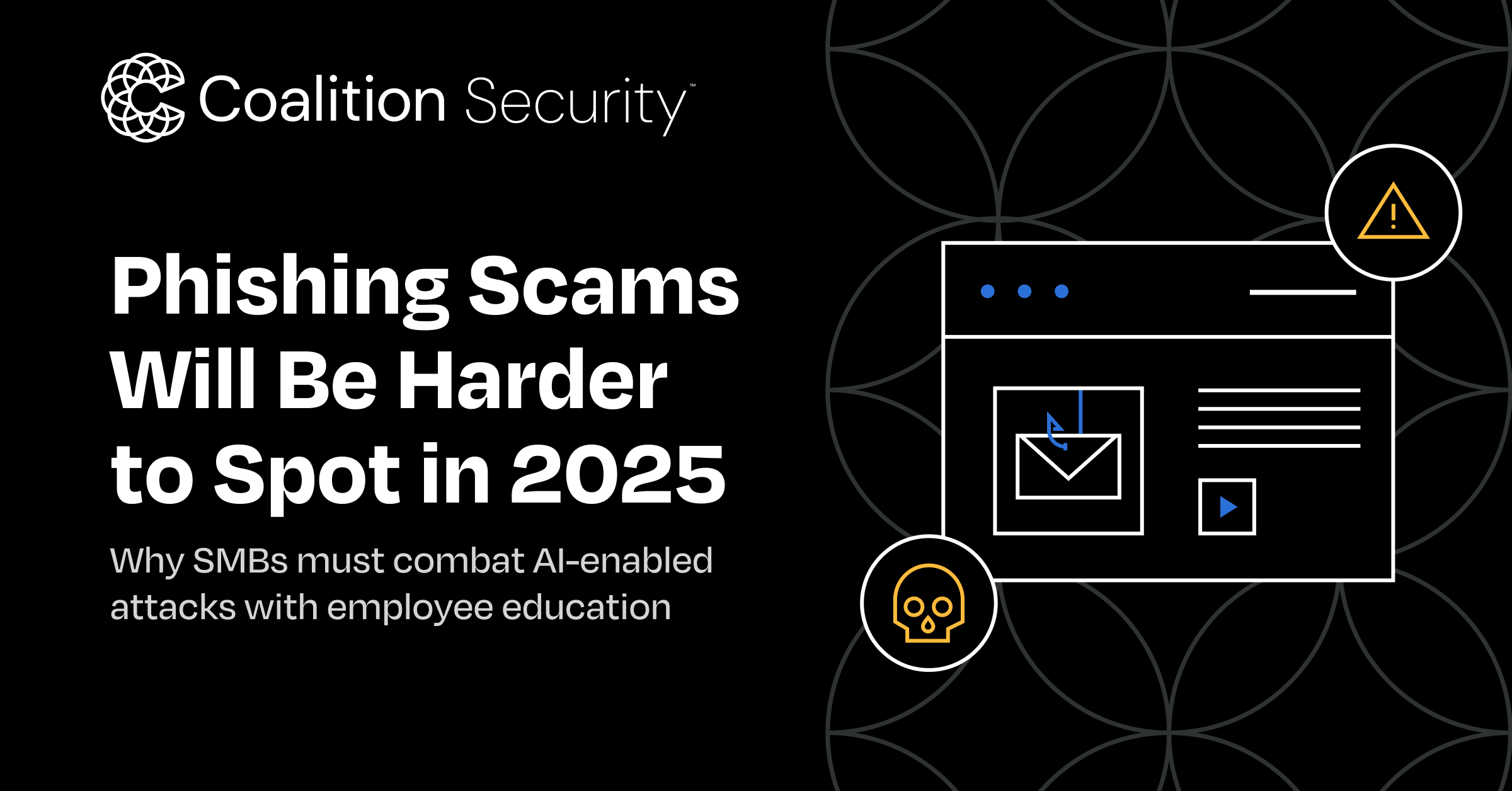Phishing emails and messaging scams are getting harder to spot each year. In 2025, cybercriminals are using advanced tools powered by artificial intelligence to craft highly convincing messages that mimic trusted sources. This growing threat is causing significant concern for both individuals and businesses. Fortunately, AI isn’t just being used by attackers—it’s also a powerful tool to fight back. By analyzing patterns, detecting unusual behaviors, and automating responses, AI-driven solutions are offering a new level of protection against these scams. Learn more in Phishing Scams in 2025: Alarming Trends and How to Stay Safe.
The Scale and Scope of Phishing Threats
Phishing scams are no longer limited to poorly written emails with obvious red flags. Today, they are far more sophisticated. Cybercriminals are deploying AI to create scams that are exceedingly difficult to distinguish from genuine communication. As these threats grow in complexity, the impact on individuals and businesses becomes increasingly devastating.
AI’s Role in Phishing Scams
Artificial intelligence has become a double-edged sword in cybersecurity. While it can be used to protect us, scammers are exploiting the same technology to launch highly convincing phishing attacks. AI enables fraudsters to write messages that mimic the tone and style of real organizations, simulating trusted entities like banks, government organizations, or even colleagues.
Using AI-powered tools, scammers can now:
- Replicate Writing Styles: AI systems analyze how people communicate and craft messages that perfectly imitate their tone and syntax.
- Generate Deepfake Audio and Video: Scammers are taking phishing to new heights by creating deepfake communications, such as audio from CEOs instructing employees to transfer funds.
- Automate Targeting: AI analyzes massive datasets to identify high-value targets and customize scams accordingly.
- Circumvent Security Systems: Machine learning enables these tools to bypass spam filters and avoid detection through subtle adjustments in language.
According to AI-Driven Phishing And Deep Fakes: The Future Of Digital Fraud, phishing attacks that utilize AI have increased by over 49% since 2022, indicating just how quickly this threat is growing. If you’re interested in learning more about AI’s impact on online fraud, explore the How AI Is Transforming Online Fraud and How to Protect Yourself blog post.
Impacts on Individuals and Businesses
The consequences of phishing scams are as diverse as they are severe. They are no longer just an inconvenience—they can disrupt lives and potentially ruin businesses.
- For Individuals:
- Financial loss is often the most immediate and devastating impact. Identity theft can lead to drained bank accounts and fraudulent credit charges.
- Emotional stress takes a heavy toll, particularly for victims who feel violated or ashamed.
- Reputational damage can occur if personal or sensitive information is leaked in public settings.
- For Businesses:
- Companies face operational setbacks, such as interrupted workflows or compromised systems.
- Financial loss from fraudulent transfers or addressing breaches can reach millions.
- Reputational harm can also emerge, as clients and partners lose trust when security is breached.
A recent report detailed in Phishing Trends Report (Updated for 2025) highlights that phishing bypass rates for email filters are steadily rising. Over 54% of these attacks exploit human errors or lack of training, underscoring the importance of proactive education and advanced defense strategies.
By recognizing how AI contributes to these threats and understanding their implications, we can better equip both individuals and organizations to stay ahead of scammers.
AI-Powered Solutions to Combat Phishing Attacks
As phishing scams grow more sophisticated, traditional defenses are no longer enough. Hackers now use AI to mimic trusted sources, bypass filters, and launch convincing attacks at lightning speed. But just as AI aids scammers, it also strengthens defenses against them. Smart algorithms, real-time monitoring, automated tools, and user training are some of the ways AI holds its ground in this constant cyber battle.
Real-Time Threat Detection Algorithms
AI excels in identifying phishing threats by analyzing patterns and historical data. Machine learning models, for instance, scrutinize email headers, message structures, and even writing styles to detect unusual behaviors. These algorithms process vast datasets faster than any human ever could, making it possible to catch subtle signs of phishing attempts.
For example, certain models flag emails impersonating executives by spotting minor inconsistencies in tone or formatting, even when the email appears legitimate at first glance. By continuously updating its knowledge base with new phishing tactics, AI ensures real-time threat assessment. Advanced solutions like these help stop scams before they reach inboxes. If you’re curious about more advanced ways AI is tackling phishing, check out How Can AI Be Used to Combat Phishing Attacks.
Behavior-Based Alerts and Monitoring
Tracking anomalies in user behavior is another way AI combats phishing. It takes note when something doesn’t match an employee’s usual activity—like logging in from a new location or accessing a rarely used app—to trigger alerts. High-risk actions, such as sudden requests for sensitive data, are flagged immediately.
These behavior-based systems give context to what’s happening, so IT teams and users can take action quickly. Imagine your bank calling you before approving a suspicious transaction. Similarly, AI systems act as watchful guardians, scrutinizing activities 24/7 to warn you of potential risks.
Automated Threat Mitigation Tools
AI tools don’t just identify threats—they respond to them automatically. Platforms incorporating automated mitigation features can:
- Block fraudulent emails before they hit your inbox.
- Quarantine suspicious messages for further review.
- Stop users from accessing fake sites by analyzing URLs in real time and denying access.
These tools minimize human error, which is often the weak link in cybersecurity. Systems like AI-driven firewalls raise the bar for phishing defense by neutralizing threats without delay. For a deeper dive into these tactics, explore the insights in How AI is Making Phishing Attacks More Dangerous.
Employee and End-User Training via AI Simulations
Even the smartest tools can only do so much if people don’t know how to recognize phishing attempts. This is where AI-powered simulations come into play. By mimicking real-world scams, these programs train employees and users to spot red flags like suspicious links or attachments.
For example:
- AI creates fake phishing emails tailored to the company’s vulnerabilities.
- It tracks who falls for the bait and provides custom feedback.
- Over time, simulations improve awareness, reducing error rates.
Investing in user education doesn’t just protect against current scams—it builds long-term resilience. Combined with smart AI tools, awareness training becomes a critical defense layer.
By blending technology with training, organizations can create a strong, multi-layered approach to combat phishing.
Real-Life Case Studies: Success Stories with AI Security Tools
As the battle against phishing emails and messaging scams intensifies, AI tools are stepping up as essential allies. Their ability to detect threats, prevent incidents, and educate users has changed the game. Here’s how businesses and individuals alike have reaped the rewards of these solutions.
Corporate Success Stories: How Businesses Utilized AI-Driven Tools to Reduce Phishing Incidents
In 2025, corporations are prioritizing cyber-resilience, with many turning to AI-driven solutions to combat phishing. These tools aren’t just reacting to scams—they’re proactively preventing them.
One high-profile example comes from a multinational bank that integrated AI to monitor email traffic. The AI flagged suspicious patterns like unusually urgent wording or mismatched email domains. Over the course of 12 months, the bank reported a 72% reduction in successful phishing attempts, saving millions in potential losses. By implementing robust machine learning systems, the bank detected and stopped breaches before they could escalate.
Another case involved a healthcare organization targeted by phishing attacks seeking to exploit patient data. They employed AI-based monitoring tools to safeguard sensitive information. These tools continuously scanned emails and flagged inconsistencies, such as links redirecting to unauthorized sites. According to their Incident Response Team, AI pinpointed 97% of malicious emails, reducing data breach risks drastically. If you’d like to learn more about preventing system exploitation through technology, you can review Online Earnings in 2025: Risky Platforms to Avoid and How to Spot Them.
These examples highlight AI’s ability to safeguard businesses by automating threat detection and minimizing the element of human error. For companies facing sophisticated attacks daily, these tools are no longer optional but crucial.
Individual Protection Case Examples: Preventing Scams with AI Solutions
AI impacts individuals just as dramatically as it does corporations. Take the story of Sarah, a freelance designer who encountered what seemed to be a legitimate client email requesting payment information. Sarah’s phishing detection tool reviewed the email contents, highlighting the mismatched sender domain and an unfamiliar link. By warning Sarah before she could click, the AI stopped a potential loss of thousands.
Similarly, John, a retiree, nearly fell victim to a tech support scam. Using an AI-powered app on his phone, he received an alert flagging the suspicious phone number and was advised not to engage. These proactive solutions saved John from losing significant retirement funds.
Beyond financial protection, AI has also boosted email privacy. Apps leveraging AI ensure that only verified senders can pass through filters. This is especially helpful for professionals and everyday users alike. Curious about how broader AI strategies help in fraud prevention across systems? Read Arbnora Elezi Disability Fraud in Germany.
The beauty of these tools lies in their practicality. They integrate seamlessly into devices and daily routines, functioning as silent protectors in the fight against phishing.
By directly addressing threats and offering intuitive solutions, AI-driven systems empower individuals to navigate the increasingly risky world of online communication with confidence.
Guidelines for Choosing AI Tools to Protect Yourself
When it comes to protecting yourself from phishing emails and scams, not all AI tools are created equally. The market offers countless options, but choosing the right one can be overwhelming. To make an informed decision, it’s crucial to focus on the features, reliability, scalability, and cost-effectiveness of the tool. Below, I’ve outlined the key areas to consider to ensure you’re selecting the best AI solution for your security needs.
Key Features to Look For
The effectiveness of an AI tool often comes down to its features. While bells and whistles are nice, the essentials matter most. Here are the key characteristics you should prioritize:
- Integration Capabilities: The tool should easily integrate with your current systems, whether it’s your email client, business apps, or mobile devices. Tools that can sync seamlessly are less disruptive and save time on setup.
- Real-Time Detection: Detecting threats as they happen is non-negotiable. Look for tools capable of analyzing emails, messages, and even user behavior in real-time to spot phishing attempts before any damage is done.
- Ease of Use: Complicated systems are counterproductive. A user-friendly interface ensures that you or your team can effectively utilize the tool without requiring constant support or lengthy training sessions.
- Behavioral Analytics: Tools leveraging behavioral analytics can detect anomalies or risky actions. They don’t just watch emails—they observe login patterns, link clicks, and more.
For a deeper look into tools offering these features, check out 10 AI Tools Every Business Needs to Combat Cyber Threats in 2025.
Trusted AI Security Providers
It’s crucial to rely on AI tools from established and trusted vendors. Some providers continuously enhance their solutions and adapt to new threats, while others fall behind. Consider options from companies with proven track records in protecting individuals and organizations from phishing scams.
Brands like Darktrace and Barracuda are highly regarded for their AI-driven security measures, providing cutting-edge tools tailored to phishing prevention. Similarly, resources like the OWASP AI Security and Privacy Guide offer advice on secure and privacy-focused implementations. Doing your homework on vendors ensures you’re making an informed choice.
You can also explore AI Tools to see detailed breakdowns of products currently excelling in this field.
Cost vs. Value Considerations
Budgeting for AI security tools can be tricky, but it’s important to weigh cost against value. An overly cheap solution might leave gaps in your defenses, while a top-tier product might be loaded with features you don’t need.
Here’s how to strike the right balance:
- Start with Your Needs: Only pay for features that solve your specific problems. If you’re an individual rather than a business, you don’t need enterprise-level scalability.
- Examine Long-Term Savings: A slightly more expensive tool that reduces scam incidents and prevents financial loss could save you thousands down the line.
- Trial Periods and Demos: Many providers offer free trials or demonstrations. These give you hands-on experience with the tool without upfront commitment.
Investing in AI for scam prevention isn’t just about avoiding losses—it’s about peace of mind. For practical tips on safe AI use, check out 6 Ways to Be Safe While Using AI.
Scalability and Adaptability
The online world never stays the same for long, so your AI tools need to keep pace. Features that enhance scalability and adaptability are critical for long-term success, especially for businesses or growing families.
- Scalability: If you’re a startup or small business, choose a solution that can handle increasing workloads and evolving security needs. A scalable tool grows with your needs without requiring a new investment every few years.
- Adaptability: AI tools should be capable of learning from past incidents. This means they can adapt to new phishing trends and update their algorithms accordingly.
For example, phishing scams often evolve based on current events, making adaptability crucial. Selecting tools with built-in learning mechanisms ensures you’re always ahead of the curve. Resources like the Guidelines for Secure AI System Development provide frameworks to consider how scalable solutions address security challenges.
When it comes to staying protected, choosing the right AI tools isn’t just about technology—it’s about practicality and future-proofing.
Future Outlook: AI and Phishing Prevention
Artificial intelligence (AI) is set to redefine how we combat phishing attacks in the coming years. As cybercriminals become more adept at using AI for malicious purposes, the technology itself will also evolve to outsmart them. But what does the future hold for AI’s role in phishing prevention? Let’s break down what we can expect in terms of advancements and ongoing challenges.
Enhanced AI-Driven Threat Intelligence
In the future, AI tools will not only identify phishing threats but also predict and preempt them. By harnessing machine learning, these systems will have the ability to:
- Analyze vast amounts of real-time data from phishing incidents.
- Identify new scam tactics before they become widespread.
- Adjust security protocols dynamically to address emerging threats, such as AI-generated deepfakes or synthetic identities.
Sophisticated machine learning models will ensure that threat intelligence isn’t reactive but proactive. For instance, next-gen AI might analyze subtle anomalies in phishing messages, such as irregular sentence structure or hidden metadata, allowing it to predict evolving strategies from threat actors. If you’re curious about these innovative solutions, explore AI-Driven Tools and How They Combat Cyber Threats.
Adoption of Advanced Behavioral Analytics
Future AI solutions will expand the use of behavioral analytics to detect phishing attempts. By focusing on an individual’s unique interactions—such as login patterns, typing speeds, or the sequences of their actions—AI can distinguish legitimate user activity from fraudulent behavior.
- Personalized Profiling: Systems will learn what “normal” behavior looks like for each user and flag activity that deviates from this baseline.
- Dynamic Risk Scoring: AI will assign risk ratings to activities and step in to block or verify suspect actions in real time.
These advancements will allow AI measures to operate seamlessly in the background, only stepping forward when something truly unusual surfaces. This makes the technology less intrusive while significantly enhancing protection. For a deeper analysis of how AI is shaping these personalized measures, check out How AI is Changing Phishing Tactics.
AI-Powered Collaboration Hubs for Cybersecurity
Another exciting development on the horizon is the rise of collaborative AI platforms. These systems will enable governments, businesses, and security organizations to share information on phishing threats rapidly, improving overall cyber resilience.
Some features we could see include:
- Shared Threat Databases: Centralized repositories of phishing attack templates and malicious domains collected from various sources.
- Coordinated Response Protocols: AI systems could automatically deploy patches or blocklists worldwide when new threats are detected.
- Global Intelligence Networks: Real-time collaboration between AI-driven platforms will help identify and neutralize phishing campaigns faster.
By working together in a connected ecosystem, AI-based solutions can provide comprehensive protection at a scale never before seen. For more insights on future global strategies, have a look at Phishing Scams Will Be Harder to Spot in 2025.
Challenges and Ethical Considerations
While the future is promising, there are essential challenges to address in using AI for phishing prevention:
- Avoiding Over-Dependence: AI systems need to coexist with human intervention. Over-relying on AI could lead to complacency in vigilance.
- Fighting AI vs. AI Battles: As AI tools advance, so do the capabilities of cybercriminals deploying them. The line between offense and defense will continue to blur.
- Privacy vs. Security: AI’s reliance on user data to craft accurate protection measures raises concerns about privacy. Balancing robust phishing defenses while maintaining user trust will be an ongoing struggle.
Navigating these issues will require balancing technological advancement with ethical responsibility. As cybercriminals leverage AI to launch smarter attacks, the ethical design and deployment of AI defense systems will become more critical than ever.
Continuous Evolution and Learning in AI
Finally, the greatest promise of future AI-driven phishing prevention lies in its ability to continually learn. By adapting to new attack methods—whether through updated algorithms, shared threat intelligence, or global cooperation—AI systems will remain at the forefront of cybersecurity innovation.
However, there’s always room for improvement. For example, deepfake detection methods will need regular refinement to keep up with advancements in video and audio manipulation. You can explore more about the emerging effectiveness of detection tools in DeepFake Detectors: Quickly and Easily Identify Manipulated Images or Videos.
The future is clear: AI will not just defend but actively shape the strategies we use to combat phishing threats. It’s an arms race, and with certain advancements already in place, the advantage is likely to remain on the side of innovation.
Conclusion
The potential of AI-driven tools in combating phishing emails and messaging scams cannot be overstated. These technologies have transformed the way we detect, prevent, and respond to cyber threats, offering unprecedented accuracy and speed. By automating threat detection, analyzing behavioral patterns, and providing real-time alerts, AI safeguards both individuals and organizations from increasingly sophisticated scams.
Now is the time to take action. Protect your digital assets by integrating AI-powered solutions into your security toolkit. Not sure where to start? Explore trusted options and practical advice in Protecting Your Investments: Avoid Cryptocurrency Scams in 2025. Together, we can stay one step ahead of cybercriminals and build a safer online environment for everyone.









